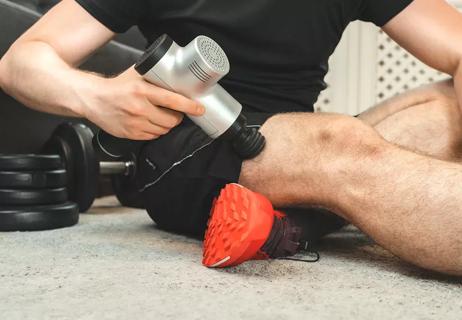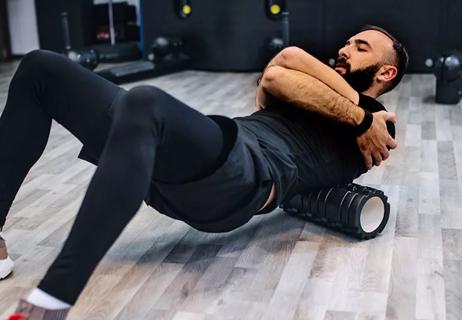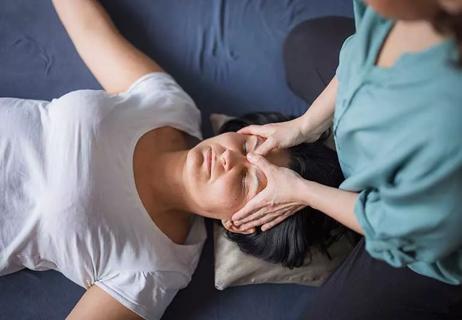Medical massage can be tailored to your health needs and help you recover faster

Massage is best known as a way to help you relax and relieve stress. A gentle soothing massage can reduce stress, relieve muscle aches, improve your sleep and improve your mood.
Advertisement
Cleveland Clinic is a non-profit academic medical center. Advertising on our site helps support our mission. We do not endorse non-Cleveland Clinic products or services. Policy
Lesser known is the fact that massage also has benefits far beyond mere relaxation. Licensed massage therapist Tracy Segall, MSHS, LMT, says that medical, or therapeutic, massage can help you with more serious medical issues, too.
Massage therapy in a clinical or hospital setting is given by licensed professionals who are trained to find and focus on problem areas.
This therapeutic type of massage involves more focused work on your body’s soft tissue — the muscles, tendons and ligaments that move and support your body.
Your physician, chiropractor, or physical therapist might recommend that you receive a therapeutic massage to complement other therapies you’re already receiving to treat a particular area of your body.
Or, you may not be getting the results you want from other traditional treatments. Receiving massage therapy on a regular basis may help in this case, too.
A massage therapist can work on a number of medical issues that are either chronic (meaning they last a long time) or acute (a medical issue that has happened recently and can be cared for in the near future.)
These issues can include:
Advertisement
“There are no typical therapeutic massages routines,” Segall says. “Your massage therapist will tailor the massage to your needs, depending on the areas of issue.”
When you first call to make your appointment, it’s important to explain to the massage therapist exactly what you’d like worked on. Talk to the therapist about what your specific needs are. For example, why did your doctor recommend you have a therapeutic massage? What are the areas of concern, and why or how did it happen?
“The more info you provide, the better,” she says. And if the massage therapist is unfamiliar with your issues, you may be referred to a colleague who can better serve your specific needs.
During your visit, your therapist may have soft lighting and music playing, just like with a relaxation massage. Instead of a whole-body treatment though, a therapeutic massage session tends to focus on your targeted area of concern — for an extended period of time.
If you schedule a 60-minute massage (this is a longer session), the massage therapist will dedicate most of the time to your areas of concern, but may also include other muscle groups to support a more comprehensive outcome.
The massage work in a therapeutic massage may feel deeper than a relaxation massage. You also may experience more tenderness as the therapist works through the tissue.
“For that reason, it’s important to let your therapist know if the pressure feels too deep or uncomfortable,” Segall advises. “Don’t be afraid to communicate.”
The therapist may use various techniques during your treatment session. Depending on their training, they may incorporate deep-tissue massage, myofascial release, trigger point work, various movement therapies or passive-resistive stretching techniques.
Another way medical massage might be given is if massage therapy is recommended as an extended part of your therapeutic treatment at your chiropractor’s office or physical therapy clinic. In this case, you’ll probably receive something called “spot work.”
The massage therapist will work on your area of concern for a shorter period of time — about 15 minutes. Spot work complements the treatment you’re already given by the other practitioners.
Your massage therapist may also incorporate stretches into the treatment plan. If that’s the case, Segall recommends wearing loose-fitting clothing or active-wear to the appointment.
“A therapeutic massage can greatly benefit your overall well-being,” Segall emphasizes. “Focused massage techniques can help decrease pain and increase your range of motion, make it easier to move and function more normally, and help you heal faster from a variety of medical concerns. If it’s an option in your treatment, the outcomes can be very positive.”
Advertisement
Advertisement
Learn more about our editorial process.
Advertisement

The same things you do to treat sore muscles after exercise can help treat soreness after a massage

Focused on stretching and yoga poses, it can increase flexibility and ease back pain

These percussive devices can help relax muscles when seeing a masseuse isn’t an option

Different from a regular massage, prenatal massages are gentle with light pressure

Foam tubes and rubber balls can help when you hurt

A gentle touch in all the right places may help drain your sinuses

Most recommended precautions center around minimizing bruising or swelling

Type 2 diabetes isn’t inevitable with these dietary changes

Applying a hot or cold compress can help with pain